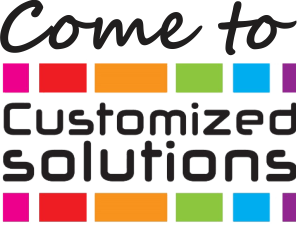Proximity Cards are based on Radio-frequency identification (RFID) technology, which uses electromagnetic fields to automatically identify and track tags attached to objects. An RFID tag consists of a tiny radio transponder; a radio receiver and transmitter. When triggered by an electromagnetic interrogation pulse from a nearby RFID reader device, the tag transmits digital data, usually an identifying inventory number, back to the reader. This number can be used to inventory goods. There are two types. Passive tags are powered by energy from the RFID reader’s interrogating radio waves. Active tags are powered by a battery and thus can be read at a greater range from the RFID reader; up to hundreds of meters. Unlike a barcode, the tag doesn’t need to be within the line of sight of the reader, so it may be embedded in the tracked object. RFID is one method of automatic identification and data capture (AIDC).
Uses of RFID
RFID can be used in a variety of applications such as:
- Electronic key for RFID based lock system
- Access management
- Tracking of goods
- Tracking of persons and animals
- Toll collection and contactless payment
- Machine readable travel documents
- Smartdust (for massively distributed sensor networks)
- Airport baggage tracking logistics
- Timing sporting events
- Tracking and billing processes
In 2010 three factors drove a significant increase in RFID usage: decreased cost of equipment and tags, increased performance to a reliability of 99.9% and a stable international standard around UHF passive RFID. The adoption of these standards were driven by EPCglobal, a joint venture between GS1 and GS1 US, which were responsible for driving global adoption of the barcode in the 1970s and 1980s. The EPCglobal Network was developed by the Auto-ID Center.
Commerce
RFID chip based Proximity Cards provide a way for organizations to identify and manage stock, tools and equipment (asset tracking), etc. without manual data entry. Manufactured products such as automobiles or garments can be tracked through the factory and through shipping to the customer. Automatic identification with RFID can be used for inventory systems. Many organisations require that their vendors place RFID tags on all shipments to improve supply chain management
Access Control
RFID tags are widely used in identification badges, replacing earlier magnetic stripe cards. These badges need only be held within a certain distance of the reader to authenticate the holder. Tags can also be placed on vehicles, which can be read at a distance, to allow entrance to controlled areas without having to stop the vehicle and present a card or enter an access code.
Hospitals and healthcare
In healthcare, there is a need for increased visibility, efficiency, and gathering of data around relevant interactions. RFID tracking solutions are able to help healthcare facilities manage mobile medical equipment, improve patient workflow, monitor environmental conditions, and protect patients, staff and visitors from infection or other hazards.
Adoption of RFID in the medical industry has been widespread and very effective. Hospitals are among the first users to combine both active and passive RFID. Many successful deployments in the healthcare industry have been cited where active technology tracks high-value, or frequently moved items, where passive technology tracks smaller, lower cost items that only need room-level identification. For example, medical facility rooms can collect data from transmissions of RFID badges worn by patients and employees, as well as from tags assigned to facility assets, such as mobile medical devices.
Libraries
Libraries have used RFID to replace the barcodes on library items. The tag can contain identifying information or may just be a key into a database. An RFID system may replace or supplement bar codes and may offer another method of inventory management and self-service checkout by patrons. It can also act as a security device, taking the place of the more traditional electromagnetic security strip.
Benefits and Privileges
Some ID cards carry extra benefits. For instance, students are entitled to discounts off movie tickets, theme park tickets, food, books and stationery by flashing their student ID cards at selected outlets.
Verify Identity during Emergencies
As most ID cards are equipped with the cardholder’s photo and personal information such as contact number, address, emergency contacts, etc., your card can be used to verify your identity when you fall victim to theft, meet with an accident or other emergencies.

